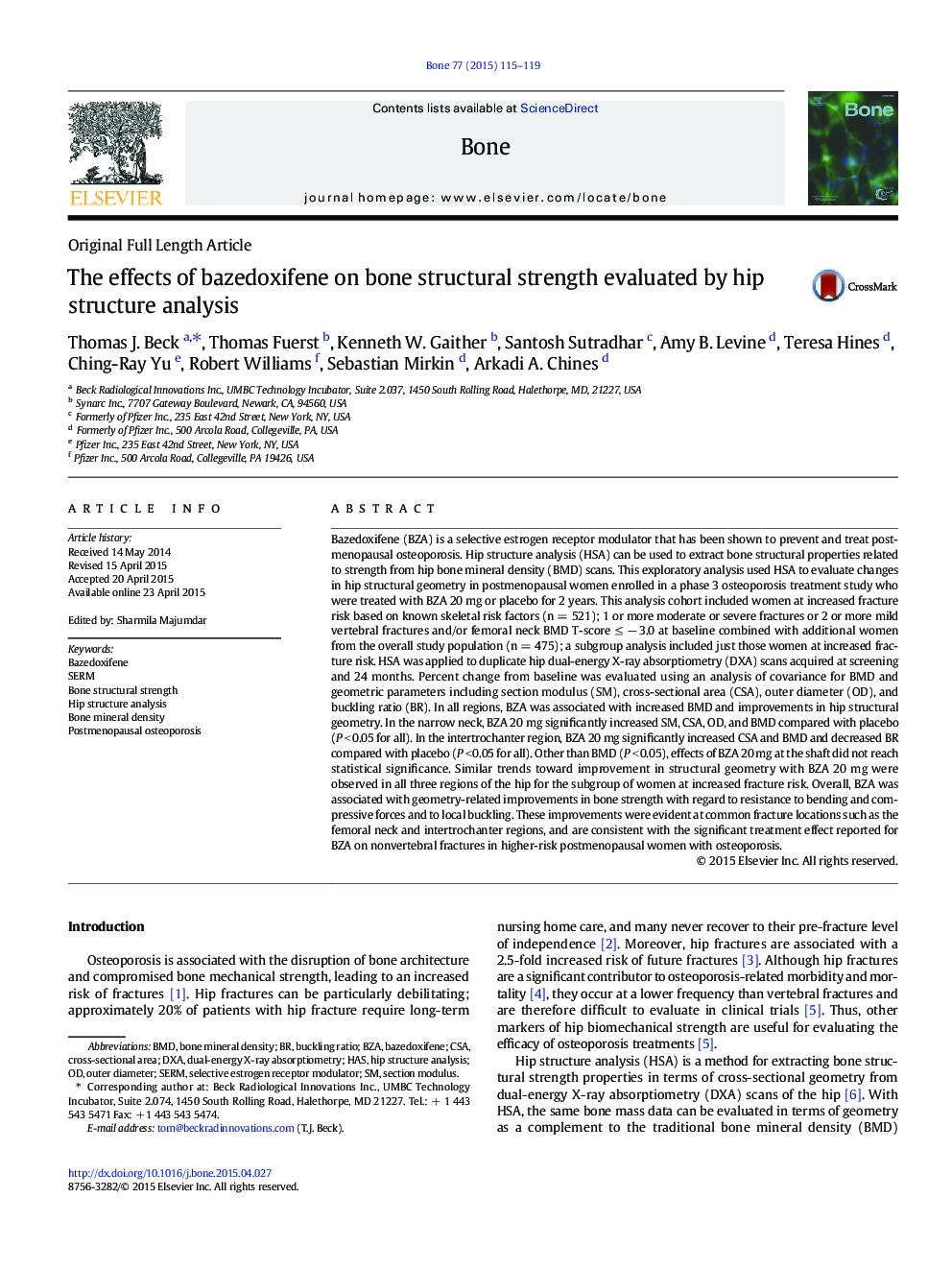| کد مقاله | کد نشریه | سال انتشار | مقاله انگلیسی | نسخه تمام متن |
|---|---|---|---|---|
| 5889702 | 1568142 | 2015 | 5 صفحه PDF | دانلود رایگان |

- An exploratory analysis evaluated hip structural strength using hip structure analysis in postmenopausal women with osteoporosis receiving bazedoxifene
- Bazedoxifene showed geometry-related improvement in bone strength with regard to resistance to bending and compressive forces and to local buckling
- Improvements with bazedoxifene were most evident at common fracture locations in the femoral neck and intertrochanter hip regions
- Effects of bazedoxifene on bone strength were generally consistent with other osteoporosis treatments
- Findings were consistent with significant treatment effect on nonvertebral fractures seen with bazedoxifene in higher-risk postmenopausal osteoporotic women
Bazedoxifene (BZA) is a selective estrogen receptor modulator that has been shown to prevent and treat postmenopausal osteoporosis. Hip structure analysis (HSA) can be used to extract bone structural properties related to strength from hip bone mineral density (BMD) scans. This exploratory analysis used HSA to evaluate changes in hip structural geometry in postmenopausal women enrolled in a phase 3 osteoporosis treatment study who were treated with BZA 20 mg or placebo for 2 years. This analysis cohort included women at increased fracture risk based on known skeletal risk factors (n = 521); 1 or more moderate or severe fractures or 2 or more mild vertebral fractures and/or femoral neck BMD T-score â¤Â â 3.0 at baseline combined with additional women from the overall study population (n = 475); a subgroup analysis included just those women at increased fracture risk. HSA was applied to duplicate hip dual-energy X-ray absorptiometry (DXA) scans acquired at screening and 24 months. Percent change from baseline was evaluated using an analysis of covariance for BMD and geometric parameters including section modulus (SM), cross-sectional area (CSA), outer diameter (OD), and buckling ratio (BR). In all regions, BZA was associated with increased BMD and improvements in hip structural geometry. In the narrow neck, BZA 20 mg significantly increased SM, CSA, OD, and BMD compared with placebo (P < 0.05 for all). In the intertrochanter region, BZA 20 mg significantly increased CSA and BMD and decreased BR compared with placebo (P < 0.05 for all). Other than BMD (P < 0.05), effects of BZA 20 mg at the shaft did not reach statistical significance. Similar trends toward improvement in structural geometry with BZA 20 mg were observed in all three regions of the hip for the subgroup of women at increased fracture risk. Overall, BZA was associated with geometry-related improvements in bone strength with regard to resistance to bending and compressive forces and to local buckling. These improvements were evident at common fracture locations such as the femoral neck and intertrochanter regions, and are consistent with the significant treatment effect reported for BZA on nonvertebral fractures in higher-risk postmenopausal women with osteoporosis.
Journal: Bone - Volume 77, August 2015, Pages 115-119